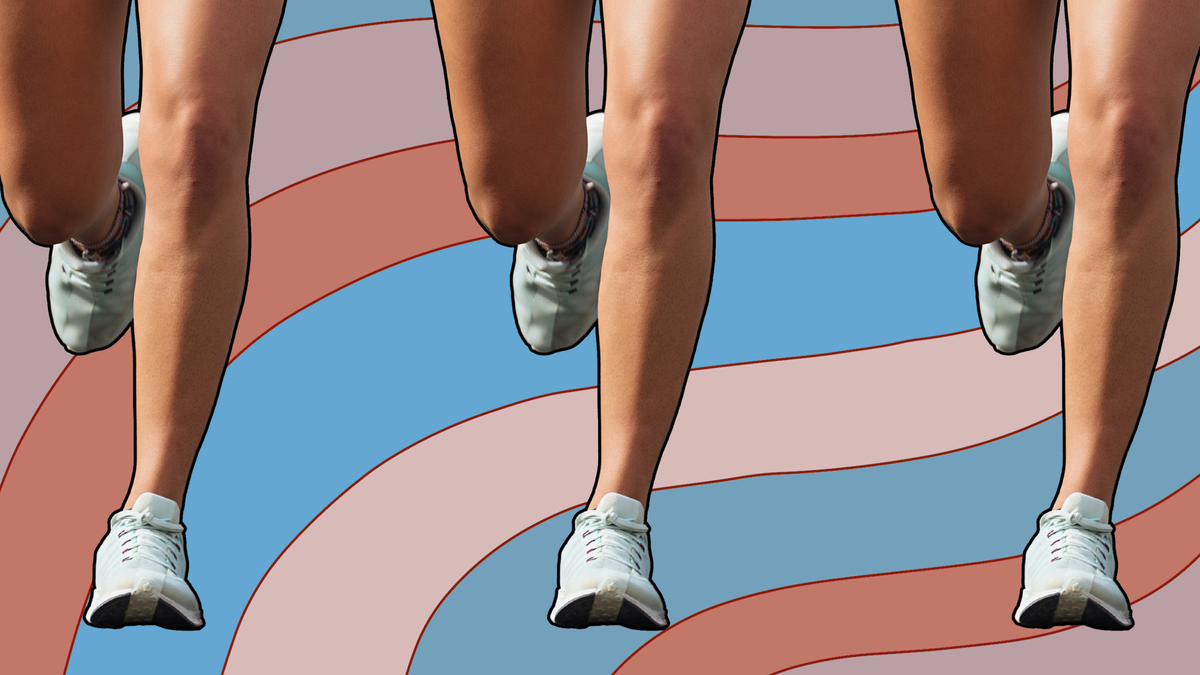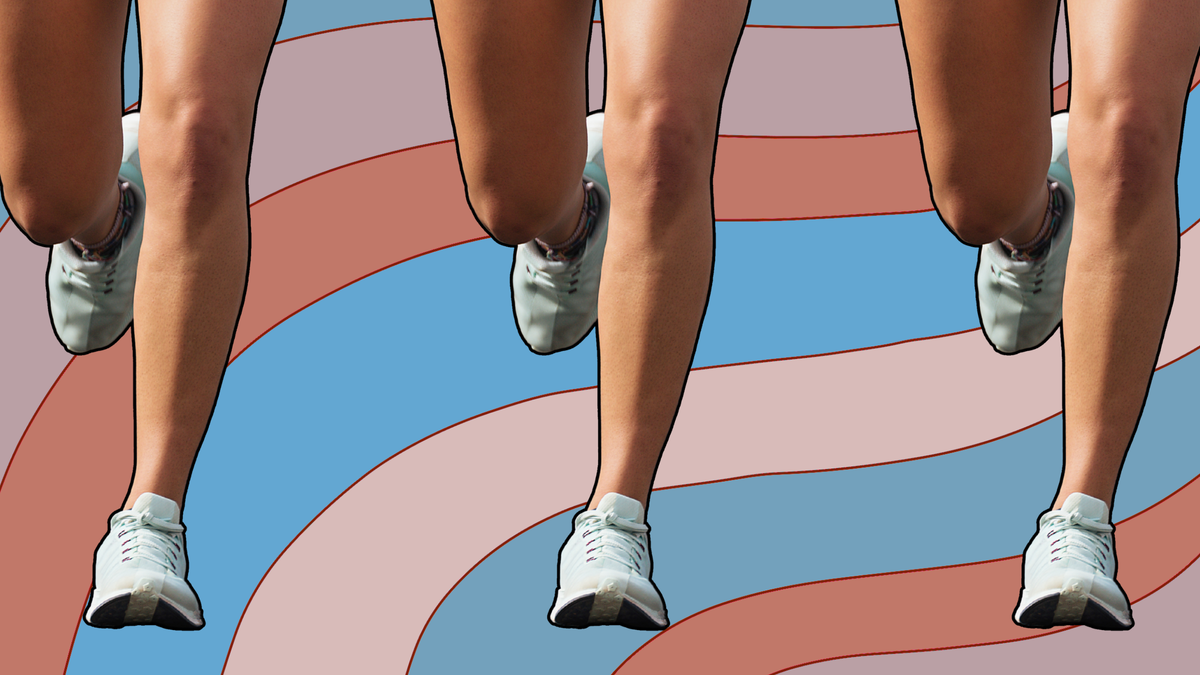
Anyone who’s run a marathon knows it entails a lot more than just putting one foot in front of the other. There’s training, hydration, nutrition, picking the right clothes, planning a strategy, sticking to that strategy, and myriad other considerations.
But inside your body, an even more complex process is going on—one most marathoners know little about.
The marathon, after all, takes a toll. Even after months of training, running 26.2 miles straight causes some major changes in your system. It’s cool…in a gruesome kind of way.
Understanding what happens to your body when you run a marathon—what your insides are experiencing, and why you feel the way you do at each stage—can help you appreciate the effort, manage the discomfort, and maybe even run a better race.
1. You Feel a Massive Adrenaline Burst at the Start Line
As the start looms, adrenal glands begin pumping out their namesake hormone. Although too much adrenaline can easily fool you into starting too fast, it also increases heart rate, leading to an increase in strength, cardiac function, and awareness—the reasons why it is often called the “fight or flight” hormone.
Adrenaline also constricts blood vessels, something that would seem to be the opposite of what you want, but is actually helpful because it increases blood pressure. “[It] helps blood flow more quickly from the heart,” says USA Track and Field coaching instructor Scott Christensen.
2. Your Heart Goes into Overdrive
Once the race starts, the heart’s main job is to pump out enough blood to supply oxygen and nutrients to the muscles that will be running 26.2 miles.
This involves not only a rapid increase in heart rate, but an increase in the amount of blood pumped per beat, a one-two punch that can cause total “cardiac output” to increase by a factor of as much as eight.
3. Your Heart Pumps Tons of Blood to Your Legs
Meanwhile, the body is also dealing with the fact that it only has a finite amount of blood. That blood can’t go everywhere, all at once, because if it did, the effect would be like simultaneously opening too many water spigots.
“The most important thing during exercise, especially during a marathon, is maintenance of blood pressure,” Brad Wilkins, an exercise physiologist at the University of Oregon, says. “Blood pressure is important to perfuse the working muscles and, more importantly, the brain, so you stay awake and don’t pass out.”
That’s why, in the pre-race fight-or-flight stage, adrenaline’s effect is important. But adrenaline quickly wears off. “[It] has a half-life of about five minutes, so it is pretty much fully gone in 20 minutes,” Christensen says.
To offset this, a portion of your unconscious nervous system called the sympathetic branch steps in, sending messages to blood vessels to constrict them.
But you don’t want all of your blood vessels to constrict, especially not the ones serving the legs. So, the body uses yet another process, called functional sympatholysis, to override the sympathetic nervous system where appropriate.
This process is driven by factors specific to hard-working muscles, such as low oxygen, the accumulation of metabolic byproducts, and high levels of carbon dioxide produced by intense aerobic activity.
“Effectively, what you get is redistribution of blood flow to the areas that need it,” Wilkins says, “all while maintaining blood pressure.” That’s because the areas that need it are getting “this strong metabolic signal,” while those that don’t are getting “[a] strong vasoconstrictor signal from the nervous system.”
4. But Directs Blood Away from Your Gut and Kidneys
There are some downsides to the changes in blood flow. The big one is that the digestive system now gets low priority.
Blood flow to the gut can decrease by as much as 80 percent, says Beat Knechtle, a Swiss primary care physician who has run 530 marathons, 330 long-distance triathlons, and more than 60 ultra-marathons. He’s also an exercise physiology researcher.
The reduced blood flow to the intestinal lining not only decreases its ability to absorb nutrients (such as the gel you are trying to use to fuel your race), but it can also affect the bacteria living in your gut—both of which, he says, can send you on a quick hunt for the nearest toilet. “Running also causes vibration and bouncing of the intestines, worsening GI distress,” he adds.
Blood flow to the kidneys can also decrease by as much as 50 percent, Knechtle notes.
5. You Get Tired and Hit the Wall
As the race progresses, fatigue will inevitably set in, with the possibility that you might hit the wall.
The causes of fatigue are subject to much debate. The buildup of lactate in the bloodstream is often blamed, but that is simply not true. Lactate is a byproduct of activities that produce fatigue, but in and of itself, it is harmless. “Lactate is definitely not the cause of fatigue,” Wilkins says.
A better theory is that lactate comes from the production of lactic acid—a molecule that, Wilkins says, immediately dissociates into a lactate molecule and a hydrogen ion. Perhaps it is the hydrogen ion that causes fatigue?
That’s a common supposition, but Wilkins is dubious. “We have buffering systems to be able to handle that,” he says, noting that one of these is bicarbonate, currently touted as a fatigue-fighting supplement. “So, that hydrogen ion can be buffered quite effectively before it causes a large effect.”
More likely, he says, muscle fatigue is related to an imbalance between other ions, possibly potassium, across muscle membranes, changing the ability of muscle cells to contract on demand.
Hitting the wall is basically fatigue on steroids. Again, there are lots of theories, the simplest of which is that you have run out of glycogen, the molecule your body uses for carbohydrate fuel.
“Do the math,” Christiansen says. “We have about 2,800 calories of carbohydrate stored in the body. Each mile uses about 110. When you are around 21 miles, most of the carbohydrate stores are used up [because] your body retains about 18 to 20 percent to keep you alive.” This, he says, forces a shift from carbohydrate to fat, which takes more biochemical steps to convert to muscle energy, “so, race intensity slows in most people.”
Wilkins has a different theory. For him, hitting the wall involves running faster than “critical speed,” defined by one study as “maximal metabolic steady state”—a scientific mouthful that means the fastest aerobic pace you can maintain for an extended period of time.
Calculating your critical pace is complex, but Wilkins’ point is not. You hit the wall when you run too many miles faster than your critical pace.
“We can think of it as a battery,” Wilkins says. “It’s basically what’s the distance above your critical speed that you can run before you become exhausted. When you deplete that, that’s hitting the wall.”
6. Your Body Switches Energy Systems—Anaerobic to Aerobic
Meanwhile, your muscles are adjusting to the demands being placed on them. In the first five to ten seconds, Christensen says, they will be drawing on a stored energy source called phosphocreatine. “For a 10-second 100-meter dash,” he says, “this energy source is crucial. For a marathon, it is insignificant”—with the caveat that, like adrenaline, it can draw you out too fast because it feels so easy that some runners call it “free energy.”
From ten seconds to about 90 seconds, Christensen says, you are running mostly on the anaerobic energy system, a mainstay for 400m and 800m racers. Not because you are running at 400m or 800m effort, but because that’s the energy system that next kicks in after phosphocreatine wears off. Then, the aerobic system gets fully ramped up and predominates for the rest of the race.
“The bottom line,” Christensen says, “is a runner can burst from the starting line for about five or six seconds, then settle down to a much slower pace for the next couple of minutes (to limit anaerobic fatigue), then let oxygen do its thing.”
Though Knechtle notes, unless you are on the front line, fearful of being trampled at the start, there’s no reason to incorporate any of this into your race plan. “Starting slow, then increasing speed is the key to a fast marathon time,” he says. And he notes that the process described by Christensen works best for people who can start running immediately after the gun is fired. If you are mid-pack in a large race, you’re going to be forced to spend a lot of time walking to the start, then running slowly.
7. You Might Experience Cramps and Start Gasping for Air
Even if you don’t hit the dreaded wall, your body is starting to pay the toll, and you might experience other marathon nightmares.
For some people, that comes in the form of muscle cramps, ranging from minor to debilitating. Knechtle says that up to 18 percent of marathoners experience these in any given race, and as many as 30 to 50 percent do so at least once in their careers.
Runners and coaches often blame this on dehydration or electrolyte imbalance, but, Knechtle says, the science doesn’t back them up. Rather, he says, “cramps tend to occur in specific, heavily used muscle groups (e.g., hamstrings in runners, forearms in canoeists), consistent with neuromuscular fatigue, rather than systemic electrolyte imbalance.”
Also common in the late stages of the race is what coaches often call “ragged breathing,” in which breathing becomes irregular, gasping, and inconsistent. This is often attributed to your body running out of oxygen, but Wilkins believes it’s more about building up too much carbon dioxide in the blood. “Carbon dioxide is a very strong stimulus to breathe,” he says.
After the Race: Swollen Limbs, Bloody Urine, and Reduced Immunity
Your body continues to pay the toll. The pounding from tens of thousands of steps leaves behind microscopic muscle damage—what Wilkins calls “a lot” of muscle damage. This has two major effects. One is that the muscle cells are filled with a lot of damaged proteins—“gunk,” as Wilkins puts it, though he notes that “gunk” is “not a physiological term.”
This draws water into the muscle cells, causing them to swell. That creates stiffness and pain, though the pain doesn’t actually come from the damaged muscle fibers. “Our muscles don’t have nerve endings that sense pain,” Wilkins says. “Tissues that surround [them] do, so that’s where the pain [comes from].”
As your body repairs itself, debris from that muscle breakdown passes through your kidneys, sometimes making your urine darker. You might also see blood in your urine. “[This] is relatively common,” Knechtle says, noting that lab tests have found that 13 to 50 percent of runners test positive for blood in their urine after a marathon. There are a number of possible explanations, mostly involving the combination of reduced blood flow to the kidneys and the pounding from the race, which squeezes blood cells into your urine.
Still, even though it’s common, it’s not necessarily normal. If it persists for more than a day, go see your doctor.
In the days that follow, your immune system also takes a hit. The physical stress of the marathon suppresses your system’s defenses, leaving you more vulnerable to colds or infections—the so-called “open window” effect.
Even with super shoes, smart fueling, and a flawless race plan, 26.2 miles is one of the toughest tests of human endurance. But understanding what’s happening inside your body makes finishing that race even more impressive.
The post What Happens to Your Body When You Run a Marathon? appeared first on Outside Online.














